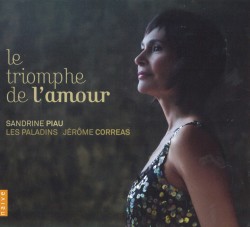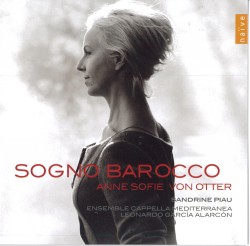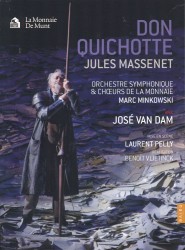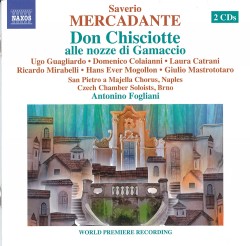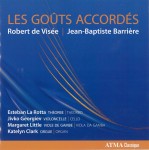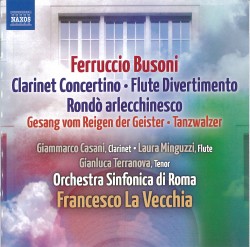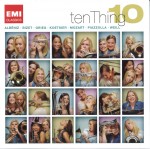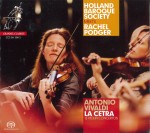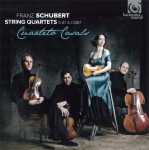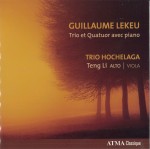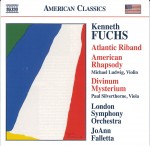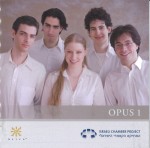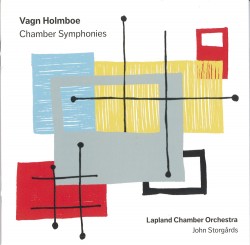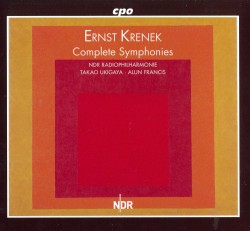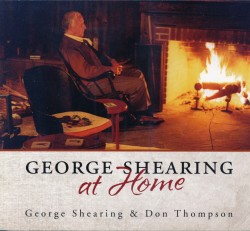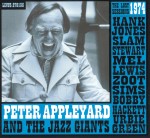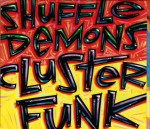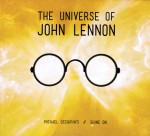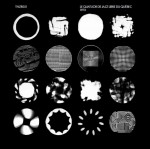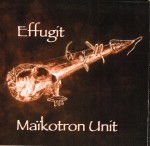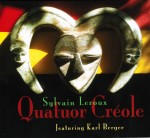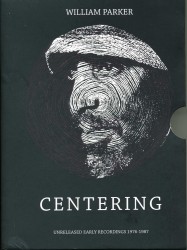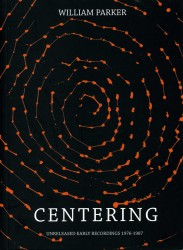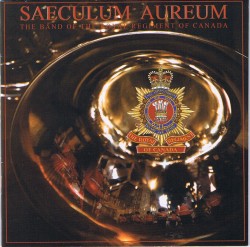EDITOR’S CORNER - October 2012
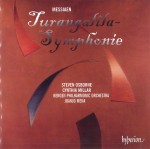 Last month when mentioning a new recording of Olivier Messiaen’s Et exspecto ressurectionem mortuorum I lamented the fact that, although admittedly designed for very different purposes, the 1964 work lacked the exuberance of the earlier Turangalîla Symphony. I was very pleased to find in a recent shipment from Harmonia Mundi Canada, which distributes a number of distinguished European labels, a June 2011 recording of that seminal work. Juanjo Mena conducts the Bergen Philharmonic Orchestra with Steven Osborne (piano) and Cynthia Millar (ondes Martenot) in a gloriously rambunctious performance of the Turangalîla on Hyperion (CDA67816). Commissioned by Serge Koussevitsky for his Boston Symphony immediately after the Second World War, Messiaen took several years to complete the ten movement work. Although unmistakably Messiaen, there are distinct hints of Gershwin in the music, perhaps reflecting the American nature of the commission. By the time of completion Koussevitsky was too frail to conduct the premiere and that duty fell to his flamboyant protégé Leonard Bernstein. The pianist for that December 2, 1949 performance was Messiaen’s own protégé Yvonne Loriod who would later become his second wife and the ondes Martenot was played by Ginette Martenot, sister of the inventor of that unique electronic instrument. Yvonne Loriod and her sister Jeanne would later be featured in an RCA recording of Turangalîla with the Toronto Symphony under the direction of Seiji Ozawa with the composer’s participation. Recorded in 1967, the TSO LP was the first commercial release of the symphony and to this day it is the benchmark against which all others must be measured. In 1994 it was re-issued on CD as part of the RCA NEW BEST 100 line, but only released in Japan. A decade later it finally became available in the rest of the world as RCA Victor Red Seal 59418 and a quick check of the grigorian.com site confirms it is still available. But back to the issue at hand. This new recording captures the energy and excitement of the score in all its nuances. My only reservation is the overly prominent placement of the ondes Martenot in the mix with its soaring (almost searing) textures just slightly over the top at times. It does add to the exuberance though. All in all, a welcome addition to the discography.
Last month when mentioning a new recording of Olivier Messiaen’s Et exspecto ressurectionem mortuorum I lamented the fact that, although admittedly designed for very different purposes, the 1964 work lacked the exuberance of the earlier Turangalîla Symphony. I was very pleased to find in a recent shipment from Harmonia Mundi Canada, which distributes a number of distinguished European labels, a June 2011 recording of that seminal work. Juanjo Mena conducts the Bergen Philharmonic Orchestra with Steven Osborne (piano) and Cynthia Millar (ondes Martenot) in a gloriously rambunctious performance of the Turangalîla on Hyperion (CDA67816). Commissioned by Serge Koussevitsky for his Boston Symphony immediately after the Second World War, Messiaen took several years to complete the ten movement work. Although unmistakably Messiaen, there are distinct hints of Gershwin in the music, perhaps reflecting the American nature of the commission. By the time of completion Koussevitsky was too frail to conduct the premiere and that duty fell to his flamboyant protégé Leonard Bernstein. The pianist for that December 2, 1949 performance was Messiaen’s own protégé Yvonne Loriod who would later become his second wife and the ondes Martenot was played by Ginette Martenot, sister of the inventor of that unique electronic instrument. Yvonne Loriod and her sister Jeanne would later be featured in an RCA recording of Turangalîla with the Toronto Symphony under the direction of Seiji Ozawa with the composer’s participation. Recorded in 1967, the TSO LP was the first commercial release of the symphony and to this day it is the benchmark against which all others must be measured. In 1994 it was re-issued on CD as part of the RCA NEW BEST 100 line, but only released in Japan. A decade later it finally became available in the rest of the world as RCA Victor Red Seal 59418 and a quick check of the grigorian.com site confirms it is still available. But back to the issue at hand. This new recording captures the energy and excitement of the score in all its nuances. My only reservation is the overly prominent placement of the ondes Martenot in the mix with its soaring (almost searing) textures just slightly over the top at times. It does add to the exuberance though. All in all, a welcome addition to the discography.
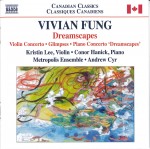 Last month I also mentioned looking forward to the release of Vivian Fung’s Dreamscapes, the latest addition to the Naxos Canadian Classics line (8.573009), and I am pleased to report that the disc lives up to my expectations. I first encountered Fung’s music in the mid-1990s in a concert with Scott St. John and friends (including Marina Piccinini as I recall) and later through recordings by the Ying Quartet (Pizzicato) and Composers in the Loft (Miniatures for clarinet and string quartet). Although renowned for her writing for string quartet — her second quartet was commissioned by the Shanghai Quartet for its 25th anniversary season and it has just been announced that she will compose the required work for the 11th Banff International String Quartet Competition in 2013 — Fung’s oeuvre ranges from solo, chamber and vocal to works for full orchestra. This new recording presents a sort of middle ground, with violin and piano concertos written for the Metropolis Ensemble, a large chamber orchestra based in New York, and Glimpses, a set of three works for prepared piano. This latter, performed by Conor Hanick, dates from 2006 and is the earliest of the works presented here (the violin concerto was completed in 2011). It marks a turning point in Fung’s development as the Edmonton-born composer expands the exploration of her Asian roots to encompass the music of Indonesia. All three of the works presented here are based on gamelan motifs and melodies giving the disc a wonderful continuity. The most obvious connection to Bali is the sound of the prepared piano, John Cage’s invention that mimics the sounds of a percussion orchestra by placing a variety of objects between and upon the strings of the piano. But the melodies borrowed and developed in the Violin Concerto and the Piano Concerto, ”Dreamscapes” which open and close the disc respectively are evocative of the exotic culture that has been so attractive to Western composers since Debussy first heard a gamelan perform at the Paris Exposition of 1889, and more particularly since Canadian-born composer Colin McPhee brought his wealth of research and recordings of the music back to North America in the 1930s. Like a number of composers before her Fung has taken inspiration from her own travels to Indonesia and truly made this music her own.
Last month I also mentioned looking forward to the release of Vivian Fung’s Dreamscapes, the latest addition to the Naxos Canadian Classics line (8.573009), and I am pleased to report that the disc lives up to my expectations. I first encountered Fung’s music in the mid-1990s in a concert with Scott St. John and friends (including Marina Piccinini as I recall) and later through recordings by the Ying Quartet (Pizzicato) and Composers in the Loft (Miniatures for clarinet and string quartet). Although renowned for her writing for string quartet — her second quartet was commissioned by the Shanghai Quartet for its 25th anniversary season and it has just been announced that she will compose the required work for the 11th Banff International String Quartet Competition in 2013 — Fung’s oeuvre ranges from solo, chamber and vocal to works for full orchestra. This new recording presents a sort of middle ground, with violin and piano concertos written for the Metropolis Ensemble, a large chamber orchestra based in New York, and Glimpses, a set of three works for prepared piano. This latter, performed by Conor Hanick, dates from 2006 and is the earliest of the works presented here (the violin concerto was completed in 2011). It marks a turning point in Fung’s development as the Edmonton-born composer expands the exploration of her Asian roots to encompass the music of Indonesia. All three of the works presented here are based on gamelan motifs and melodies giving the disc a wonderful continuity. The most obvious connection to Bali is the sound of the prepared piano, John Cage’s invention that mimics the sounds of a percussion orchestra by placing a variety of objects between and upon the strings of the piano. But the melodies borrowed and developed in the Violin Concerto and the Piano Concerto, ”Dreamscapes” which open and close the disc respectively are evocative of the exotic culture that has been so attractive to Western composers since Debussy first heard a gamelan perform at the Paris Exposition of 1889, and more particularly since Canadian-born composer Colin McPhee brought his wealth of research and recordings of the music back to North America in the 1930s. Like a number of composers before her Fung has taken inspiration from her own travels to Indonesia and truly made this music her own.
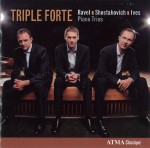 A triumvirate of Canadian soloists has recently joined forces under the banner Triple Forte to record some early 20th century gems from the piano trio literature. Ravel–Shostakovich–Ives: Piano Trios (ATMA ACD2 2633) features Jasper Wood (violin), Yegor Dyachkov (cello) and David Jalbert (piano), and what a team they make. Although Ravel’s Trio in A Minor, completed in 1914 after a prolonged gestation, has become a standard of the repertoire, the Shostakovich and Ives trios are rarely heard. Unlike the fully developed second trio from 1944 and the much later Seven Romances (after poems by Alexander Blok) for soprano, violin, cello and piano, Shostakovich’s brief Piano Trio No.1 in C Minor was written as a student in 1923. The one movement work was Shostakovich’s first foray into the world of chamber music. It is a poignant piece that reflects the loss of his father on the one hand and the splendour of first love on the other. Although Shostakovich performed the trio with two friends shortly after its completion, the score was actually left unfinished and it was his student Boris Tischenko who added the 22 missing bars of piano for the work’s posthumous publication. Like Ravel’s, Charles Ives’ Trio for Violin, Cello and Piano is a full length work that was a long time developing. Begun in 1904, the composer worked on it over a period of seven years. It bears all the hallmarks of Ives’ eclectic style with its interweaving of popular, patriotic and religious melodies. After the almost dirge-like moderato opening movement, the scherzo — entitled TSIAJ [This scherzo is a joke] — bursts forth in a rollicking combination of marches and joyous hymn tunes which occasionally give way to quiet strains of What a Friend We Have in Jesus. The final movement juxtaposes a quasi-Wagnerian melody that Ives had written in 1896 with Rock of Ages and then with Ives’ playful humour incorporates popular songs treated with syncopated ragtime rhythms. While the playing throughout this disc is exemplary, it is in the Ives, especially in the dense and often frenzied scherzo, that the skills of these fine musicians are put to the test. They pass with flying colours!
A triumvirate of Canadian soloists has recently joined forces under the banner Triple Forte to record some early 20th century gems from the piano trio literature. Ravel–Shostakovich–Ives: Piano Trios (ATMA ACD2 2633) features Jasper Wood (violin), Yegor Dyachkov (cello) and David Jalbert (piano), and what a team they make. Although Ravel’s Trio in A Minor, completed in 1914 after a prolonged gestation, has become a standard of the repertoire, the Shostakovich and Ives trios are rarely heard. Unlike the fully developed second trio from 1944 and the much later Seven Romances (after poems by Alexander Blok) for soprano, violin, cello and piano, Shostakovich’s brief Piano Trio No.1 in C Minor was written as a student in 1923. The one movement work was Shostakovich’s first foray into the world of chamber music. It is a poignant piece that reflects the loss of his father on the one hand and the splendour of first love on the other. Although Shostakovich performed the trio with two friends shortly after its completion, the score was actually left unfinished and it was his student Boris Tischenko who added the 22 missing bars of piano for the work’s posthumous publication. Like Ravel’s, Charles Ives’ Trio for Violin, Cello and Piano is a full length work that was a long time developing. Begun in 1904, the composer worked on it over a period of seven years. It bears all the hallmarks of Ives’ eclectic style with its interweaving of popular, patriotic and religious melodies. After the almost dirge-like moderato opening movement, the scherzo — entitled TSIAJ [This scherzo is a joke] — bursts forth in a rollicking combination of marches and joyous hymn tunes which occasionally give way to quiet strains of What a Friend We Have in Jesus. The final movement juxtaposes a quasi-Wagnerian melody that Ives had written in 1896 with Rock of Ages and then with Ives’ playful humour incorporates popular songs treated with syncopated ragtime rhythms. While the playing throughout this disc is exemplary, it is in the Ives, especially in the dense and often frenzied scherzo, that the skills of these fine musicians are put to the test. They pass with flying colours!
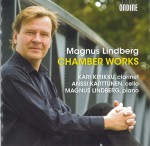 In February 2008 Finnish composer Magnus Lindberg visited Toronto to participate in concerts with the TSO and New Music Concerts. In the latter, TSO assistant principal cellist David Hetherington performed a recent Lindberg composition Konzertstück with the composer at the piano. A new Ondine release simply entitled Chamber Works (ODE 1199-2) features this piece and three others which all prominently showcase the cello and Anssi Karttunen who has worked closely with Lindberg over the past three decades. They perform as a duo called Dos Coyotes which is also the name of a hauntingly lyrical work that is the earliest on this disc, dating from 1993 and revised in 2002. Karttunen also performs the 2001 Partia for solo cello, commissioned by the Turku Cello Competition. The notes tell us it is based on Bach’s partitas for solo violin rather than the cello suites in spite of its six movement form and indeed the dance rhythms of the traditional suite are missing in this more introspective work. Lindberg and Karttunen are joined by clarinettist Kari Kriikku for a three movement Trio. Although perhaps best known for his large orchestral canvasses, Lindberg has a strong penchant for chamber music, both as a composer and a performer, as this disc aptly demonstrates.
In February 2008 Finnish composer Magnus Lindberg visited Toronto to participate in concerts with the TSO and New Music Concerts. In the latter, TSO assistant principal cellist David Hetherington performed a recent Lindberg composition Konzertstück with the composer at the piano. A new Ondine release simply entitled Chamber Works (ODE 1199-2) features this piece and three others which all prominently showcase the cello and Anssi Karttunen who has worked closely with Lindberg over the past three decades. They perform as a duo called Dos Coyotes which is also the name of a hauntingly lyrical work that is the earliest on this disc, dating from 1993 and revised in 2002. Karttunen also performs the 2001 Partia for solo cello, commissioned by the Turku Cello Competition. The notes tell us it is based on Bach’s partitas for solo violin rather than the cello suites in spite of its six movement form and indeed the dance rhythms of the traditional suite are missing in this more introspective work. Lindberg and Karttunen are joined by clarinettist Kari Kriikku for a three movement Trio. Although perhaps best known for his large orchestral canvasses, Lindberg has a strong penchant for chamber music, both as a composer and a performer, as this disc aptly demonstrates.
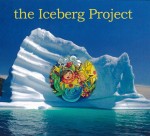 A few years back there was a local bass player named Eli Eisenberg who did some work at The WholeNote including a bit of jazz reviewing. I heard from him again recently when he let me know he’d just released a CD called The Iceberg Project (www.cdbaby.com/cd/elieisenberg) featuring instrumental music he composed, arranged, played and programmed. I must say it’s a treat. Funky, bright and bluesy, it’s a feel good situation from start to finish. I understand the title to be a pun on his name, but I think the CD would be more aptly called “The Boat Drinks Project” because it certainly would go well with one (or more) of those drinks with the little umbrellas. Definitely more reminiscent of the tropics than the North Sea. The music is jazz inflected and mainly Latin in feel. The instrumentation is mostly bass and guitar with programmed orchestrations which would normally leave me cold. But I must say that synthesis, or I guess it’s more likely sampling in this day and age, has come a long way and there are some very sophisticated sounds here. Still, when Bill McBirnie plays the flute, as he does on a couple of tracks, the ear is still reminded that acoustic instruments really do sound best. Overall this is a disc that I’ve enjoyed immensely since it arrived, especially during those otherwise oh-so-dreary morning exercise sessions.
A few years back there was a local bass player named Eli Eisenberg who did some work at The WholeNote including a bit of jazz reviewing. I heard from him again recently when he let me know he’d just released a CD called The Iceberg Project (www.cdbaby.com/cd/elieisenberg) featuring instrumental music he composed, arranged, played and programmed. I must say it’s a treat. Funky, bright and bluesy, it’s a feel good situation from start to finish. I understand the title to be a pun on his name, but I think the CD would be more aptly called “The Boat Drinks Project” because it certainly would go well with one (or more) of those drinks with the little umbrellas. Definitely more reminiscent of the tropics than the North Sea. The music is jazz inflected and mainly Latin in feel. The instrumentation is mostly bass and guitar with programmed orchestrations which would normally leave me cold. But I must say that synthesis, or I guess it’s more likely sampling in this day and age, has come a long way and there are some very sophisticated sounds here. Still, when Bill McBirnie plays the flute, as he does on a couple of tracks, the ear is still reminded that acoustic instruments really do sound best. Overall this is a disc that I’ve enjoyed immensely since it arrived, especially during those otherwise oh-so-dreary morning exercise sessions.
We welcome your feedback and invite submissions. CDs and comments should be sent to: The WholeNote, 503–720 Bathurst St., Toronto ON M5S 2R4. We also encourage you to visit our website, thewholenote.com, where you can find added features including direct links to performers, composers and record labels, and additional, expanded and archival reviews.
— David Olds, DISCoveries Editor discoveries@thewholenote.com


